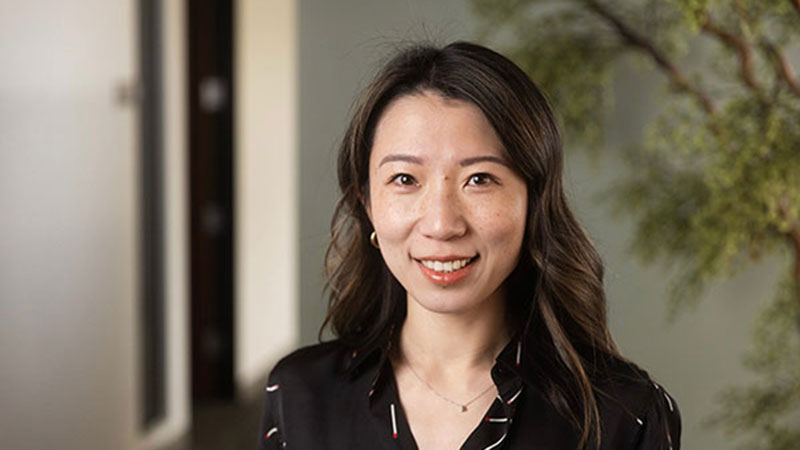Meet Yuzhong Liu, PhD. Liu recently joined the Scripps Research faculty to chemically modify biomolecules, which can be used to improve the efficacy and safety of both new and existing therapies.
Scripps Research Magazine sat down with Liu to learn more about her passion for science, her rich history of building molecular frameworks for various applications, and her favorite reading materials outside of chemistry.

How did you originally fall in love with science?
Growing up in China, none of my family members were scientists, and so there was no dramatic early life exposure that pushed me toward that path. I thought chemistry was quite fun in high school, but the pivotal moment probably came when I got into my lab courses during college. You come up with this idea of a dream molecule that you want, and then you figure out different ways to synthesize it. Nothing compares to the creativity you have in building organic structures at the molecular level.
What kinds of molecules were you building in your doctoral research?
I was working in a branch of materials science that focuses on building crystals called metal organic frameworks. The crystal framework we worked on was so porous that one gram of the material could have the surface area of sixteen football fields. The huge surface area makes these nanoparticle crystals great for gas capture, which some companies are trying to harness for water availability in the desert. The crystals absorb the cold air at night and then during the day (when it’s hot), the water is released. I believe other organizations are using the same mechanisms to capture carbon dioxide from the air to help address climate change.
How have you now turned your skills in chemical engineering toward medicine?
Many of the natural products we use in modern medicine come from the plant kingdom, but if you try to source 100% of these molecules from nature, you will quickly run into environmental problems and shortages. Instead, I’ve been chemically engineering pathways of biosynthesis in the lab so that we can produce a variety of molecules that could be useful in drug development. One example is enhancing specific biomolecules that are added into a vaccine’s composition to boost the overall immune response—what we call vaccine “adjuvants.” Another target I want to study is the heart failure drug digoxin, which is now used infrequently because of its innate toxicity. We think that if we can modify certain sugars in the right way, we can reduce the toxicity of the drug and preserve its bioactivity as a medication.
What attracted you to Scripps Research to start your own lab?
Many of these biomolecules require modifications to their constituent chains of sugars, called glycans. Scripps Research has a rich history of this glycobiology research, as well as leading expertise in synthetic biology and analytical chemistry, so I was very drawn to the model of interdisciplinary science. One of my biggest motivations in pursuing a career in biomedical research is seeing my work have a real-world impact on people’s lives. Scripps Research has a lot of translational capabilities that are uncommon for most academic institutes, so it will be extremely rewarding to see potential discoveries move from the bench to the bedside.
Outside of biosynthesis, how else do you like to spend your time?
I like to read, and I’m a big fan of murder mystery novels—particularly those by authors Agatha Christie and Richard Osman. I guess you could say I like the British sense of humor! When I’m not reading, I really like rock climbing. I’ve climbed at a lot of the climbing gyms in San Diego already, and now I need to test out my skills on the rocks out in the desert.